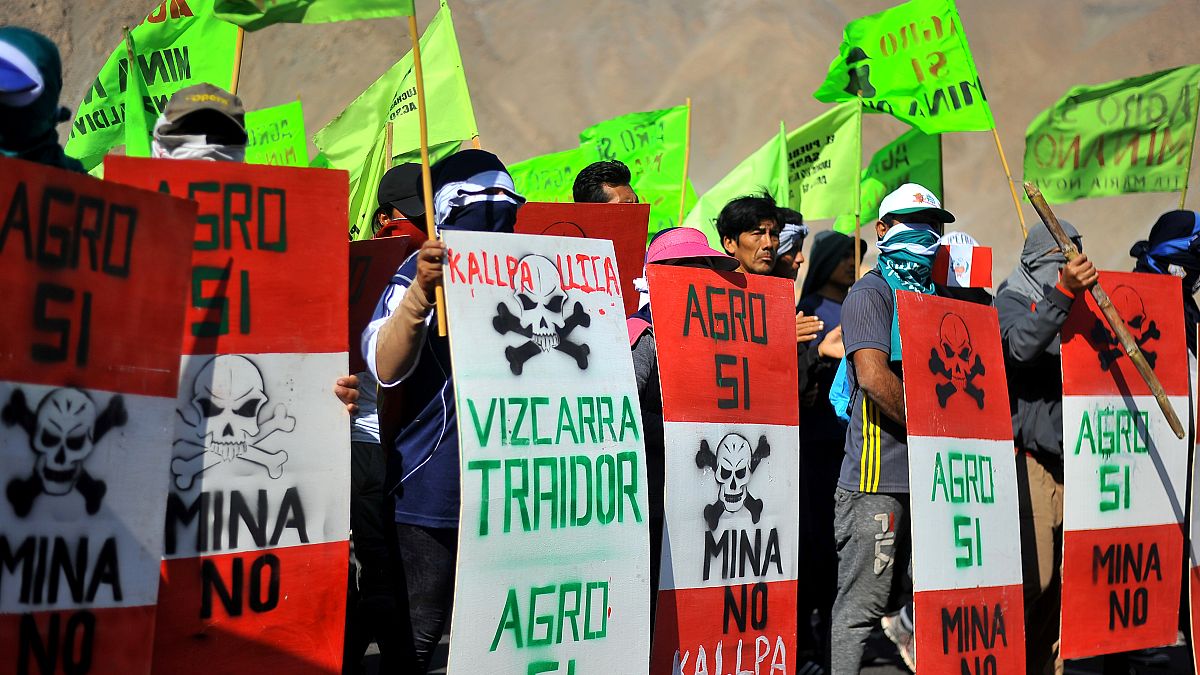The human rights group found there was an increase in deaths related to conflicts over water.
Aluisio Sampaio Dos Santos in Brazil, Nixon Mutis in Colombia, Agudo Quillio in the Philippines, Rahmat Hakiminia in Iran.
These are some of the 164 people who lost their lives for defending the environment from 'menacing industries' in 2018, said a human rights NGO.
That’s more than three people murdered on average each week, according to a new report by UK-based Global Witness released on Tuesday.
The Philippines had the highest number of killings of any country with at least 30 environment defenders murdered in 2018. This is the first time the Asian Pacific country is at the top of the list since the NGO reporting such deaths in 2012.
Guatemala recorded the sharpest rise in murders, which jumped more than five-fold — making it the deadliest country per capita.
Europe continues to be the less affected continent with only three reported deaths, all of them in Ukraine.
Increase in killings related to conflicts over water
In the 19 countries surveyed, mining was linked to 43 deaths. Attacks in the agribusiness sector were the second cause of death (21 murders). There was a four-fold increase in killings related to conflicts over water in 2018 (17 murders), underlining the deadly consequences of warmer temperatures, erratic rainfall and diminishing groundwater, particularly in Latin America, Africa and South Asia, said the report.
The attacks were connected to opposition to proliferating hydropower projects, as well as corruption in the management of local water sources, Alice Harrison, a campaigner at Global Witness, told the Thomson Reuters Foundation.
"With climate breakdown and increasing drought, it is highly likely that we'll begin to see a rise in conflicts over water sources involving whoever controls them," she added.
Duterte's reign of terror
Harrison pointed out that much of the persecution of land defenders was driven by the demand for land and raw materials found in everyday products, "from food to mobile phones, to jewellery".
"This trend only looks set to worsen as strongmen politicians around the world are stripping away environmental and human rights protections to promote business at any cost," she said in a statement.
Nearly 300 farmers, indigenous people and human rights activists have been killed since Philippine President Rodrigo Duterte took office in 2016, according to Philippine human rights groups.
“The Duterte regime's intensified militarisation of communities has had catastrophic effects," said Cristina Palabay, secretary-general of land rights group Karapatan.
"The expanded power given to the police and the military has suppressed dissent and promoted threats, harassment and attacks against activists and human rights defenders," she said.
Intimidation of environmental defenders on the rise
While there were fewer deaths reported than in 2017 (207 in 2017) Global Witness also recorded the increasing use of lawsuits, arrests, and death threats to intimidate activists even in developed countries.
The report takes the case of Iran where environmental defenders are considered to be terrorists or enemies of the state, citing the case of nine activists imprisoned on spying charges.
Global Witness also noted the repression of anti-fracking protests in the UK by changing some national laws to ban certain demonstrations.
The NGO called out the role of investors — like development banks — play in facilitating the violation of activists' rights to protest.
